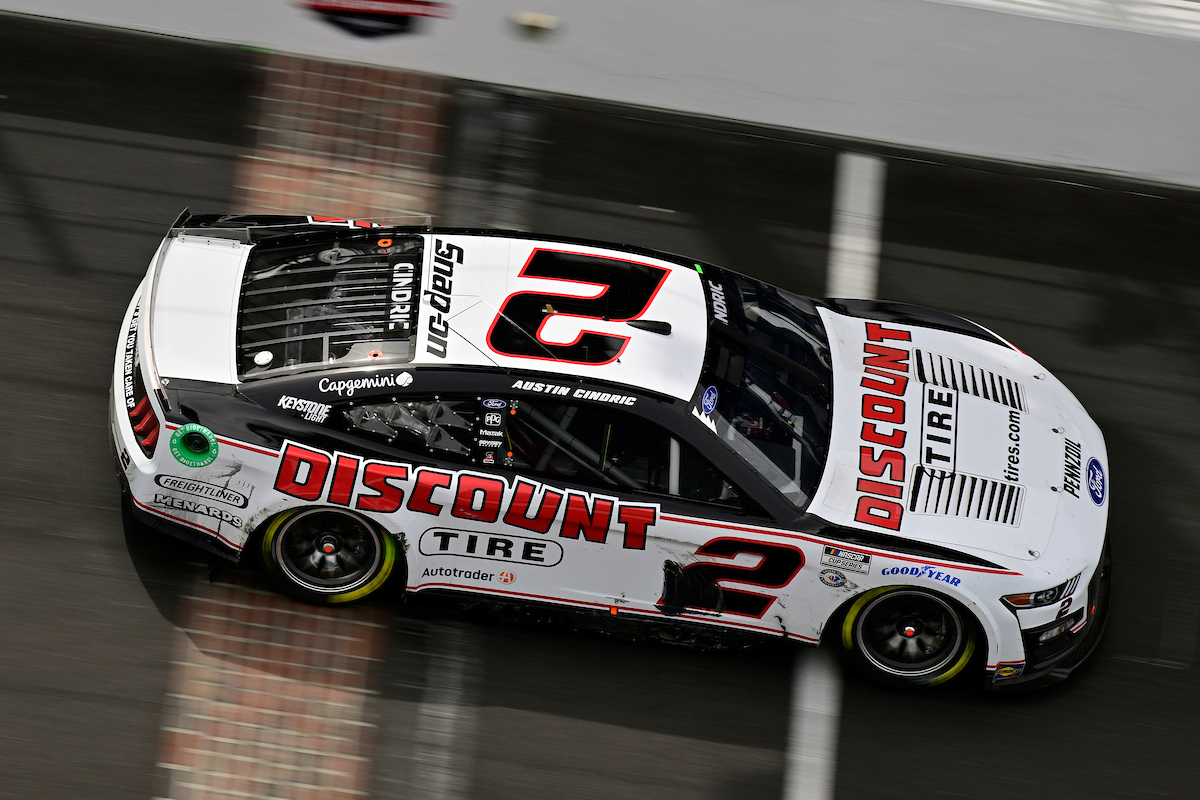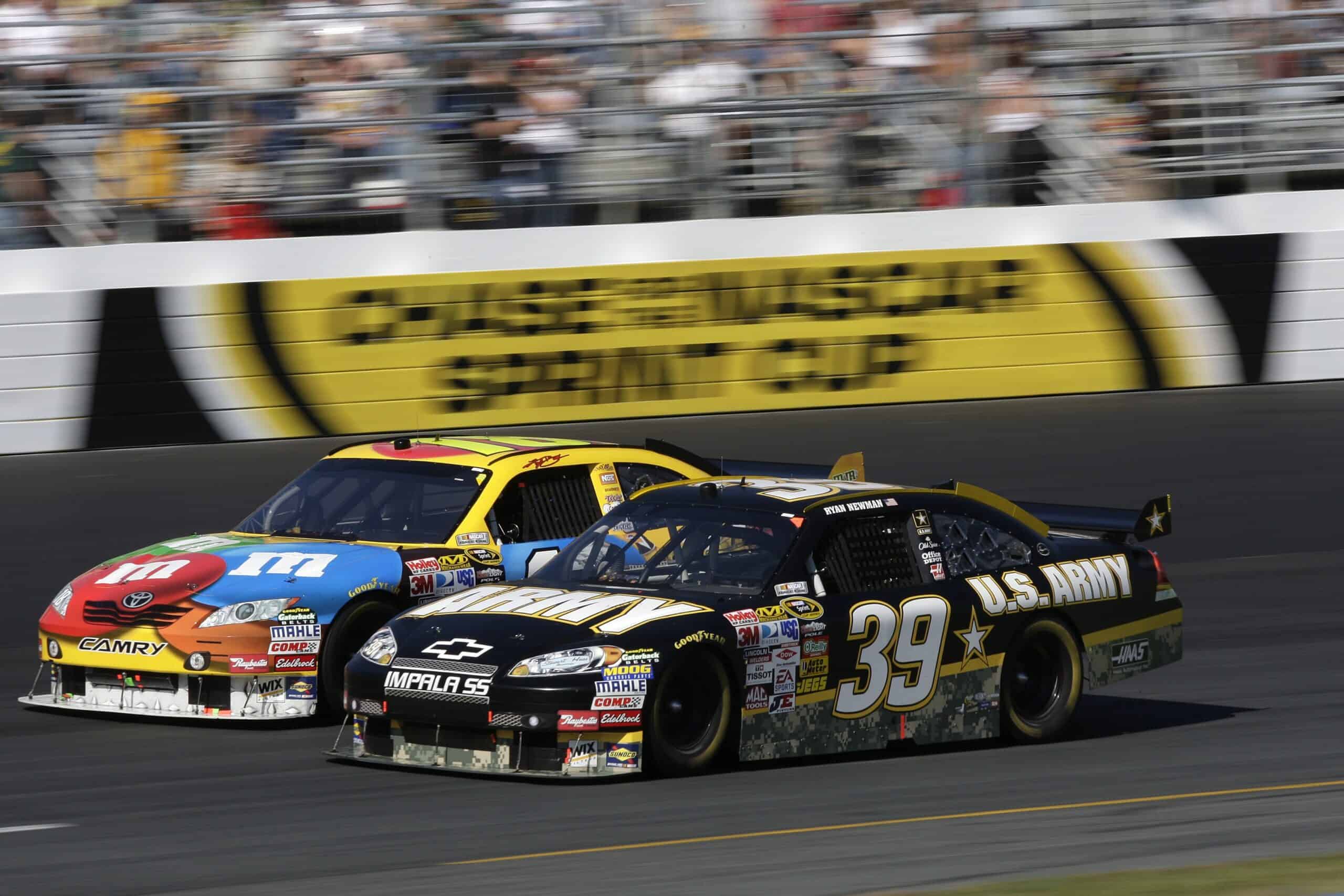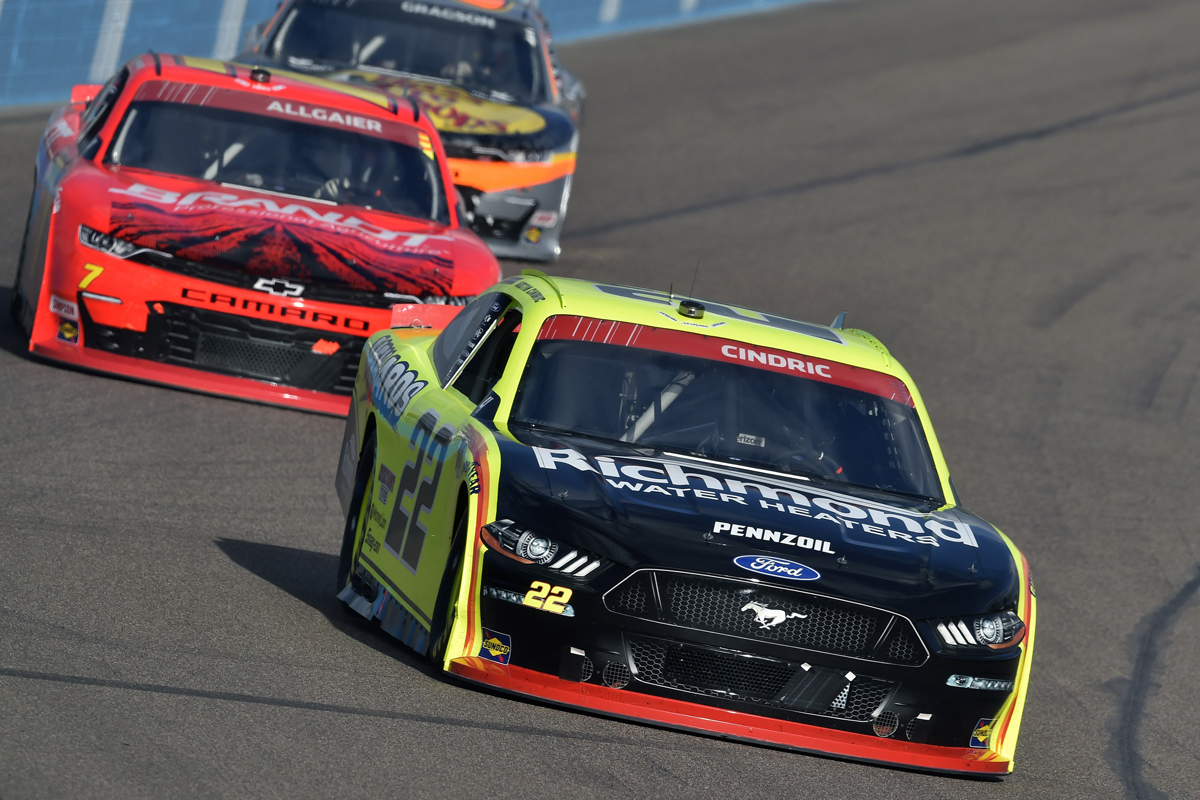Are NASCAR cars all the same? Answers to the 8 Most Interesting NASCAR Questions
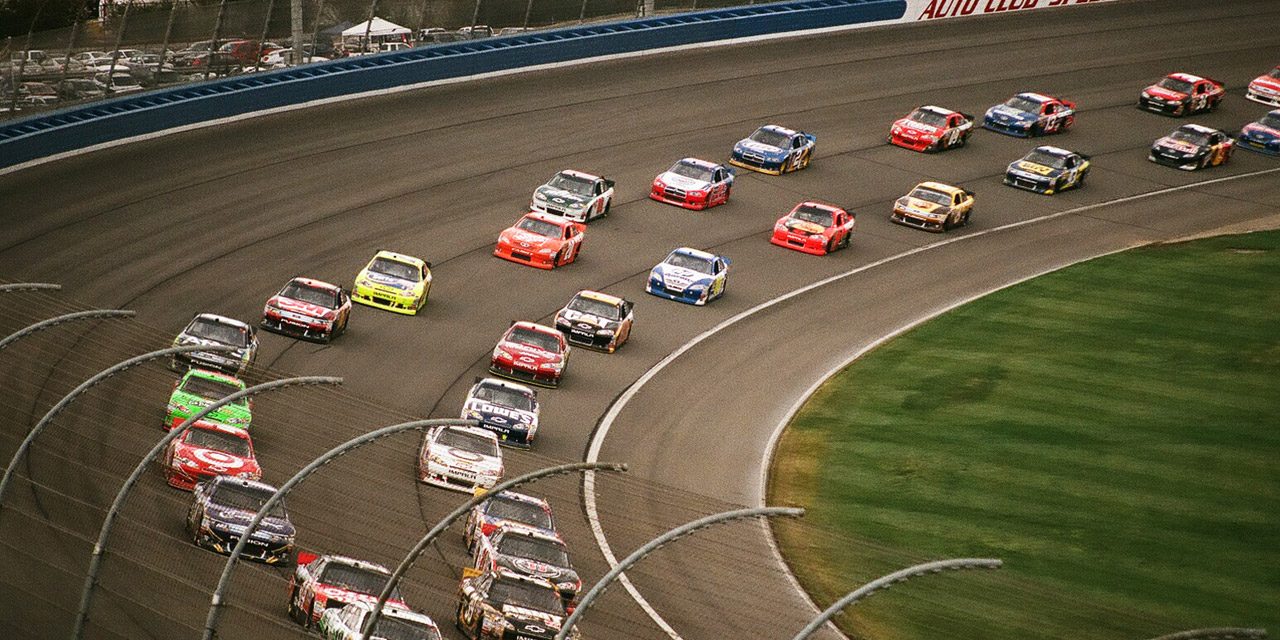
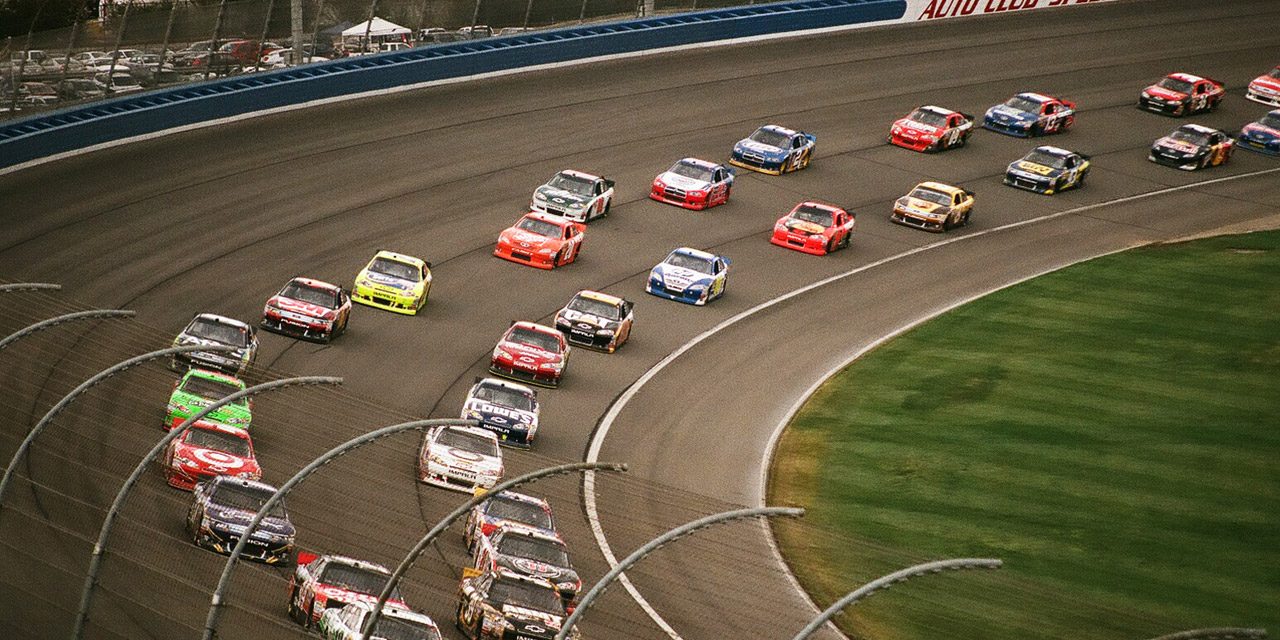
“Are NASCAR cars all the same?” You might ask yourself this, seeing all NASCAR race cars racing past you in a blur. Even though NASCAR rules are very strict to ensure close racing and safety, you’ll be surprised at what we have to tell you.
Table of Contents
Is there any difference in NASCAR cars?
Each NASCAR race car is different.
Sure, teams and manufacturers are required by NASCAR regulations to meet specific specifications, but the major differences between NASCAR cars are in their engines and body shells.
There are, however, some parts that are identical, such as tires, suspension, fuel and fuel systems, and electronics.
Chevrolet, Ford and Toyota.
These are the three manufacturers competing in NASCAR’s top-tier Cup Series. Perhaps, what attracts millions of fans to this adrenaline-fueled motorsport the most are the racing drivers from their respective teams who are all capable of winning any of the 36 races per season.
But there’s no denying that keeping the NASCAR race cars as close to each other in performance is also one of this sport’s highlights.
Right here, right now, we will answer the common questions race fans and enthusiasts have asked at least once in their lives.
Are NASCAR cars all the same?
Is there any difference in NASCAR cars? Well, short answer, yes. Long answer?
It’s more than just getting ahead of the race car right in front of you in terms of performance, or whichever looks more flashy and is more likely to attract attention on the tracks.
Every NASCAR race car follows a “template”, for lack of a better word, and each manufacturer’s NASCAR car will have to be designed and developed following this template. NASCAR calls this template the Gen-6 race car which they developed to create a neutral ground, some sort of a standard, where the three different manufacturers’ race cars can start from.
The template consists of the chassis – the form on which the car is built – a skeleton-like steel tube frame. NASCAR race cars have the default roll cage for the driver’s protection should an accident on the tracks occur.
NASCAR race cars manufacturers are then given the decision to choose their preferred body shell to be put on top.
Identical Goodyear racing slick tires, suspension components, fuel systems (and the same type of fuel), electronics, and transmission are also installed on each racecar “template”.
Manufacturers then have total control over the next step: The chassis is covered with a NASCAR-approved fiberglass body.
The bodywork of each manufacturer is distinct in shape, but the breadth of aerodynamic modification is limited to keep the playing field level.
Each NASCAR team spends a significant amount of money to improve the aerodynamic balance of their cars.
The differences between cars are so little that the average NASCAR fan won’t even notice them, but at 200 mph on the race circuit, even a half-percent improvement in aerodynamic performance can be worth as much as a 5 mph increase in peak speed.
Changes to the car’s fenders, noses that are different in shape and profile, the sweep of the windscreens’ shapes, and varied angles of the rear ends are all examples of differences in aerodynamics between manufacturers.
You’ve probably heard of lift, which is required for planes to fly.
When air moving around a surface creates a vacuum, the surface (such as a wing) is ‘lifted’ through the air.
Race cars, on the other hand, flip that same notion: it’s called downforce.
NASCAR race cars suck down to the track’s surface as they travel through the air, allowing it to better handle and navigate corners.
What’s probably the most crucial component of a NASCAR car is its engine. According to NASCAR’s technical standards, manufacturers must design and develop their own engines. All engines must have a pushrod V8 capacity of 358 cubic inches (5.86 liters) with 750 horsepower.
Engine builders invest hundreds of thousands of dollars each season fine-tuning the various NASCAR engine components to improve their performance and efficiency, allowing them to differentiate between the engines for manufacturers.
NASCAR authorities evaluate every race car before each race.
These inspections act as referees, ensuring that all race cars follow the same set of rules in order to be evenly matched despite their differing designs.
NASCAR tests if each car’s aerodynamic properties are uniform by placing a template called “The Claw” over it. Officials from NASCAR search for locations where teams’ engineers have changed the form of the car or adjusted characteristics like the ride height to gain an advantage.

Mechanical checks of other parts including the gasoline tank, engine, and suspension systems follow.
Any violation of NASCAR’s specified rules will result in the team’s car being disqualified from the race, their championship points being taken away, and a substantial punishment being imposed.
A team can only practice and qualify for the race after the pre-race inspection is completed. That is not, however, the final check to ensure that all vehicles comply with the rules.
On race day, a final inspection is performed prior to the start of the race. In case any modifications are made without NASCAR’s approval, the cars must be re-tested by “The Claw.”
NASCAR officials usually re-evaluate the top five race vehicles after the last race lap is finished.
The officials measure the entire car and check that all components comply with the rule book during this thorough inspection.
They also choose race engines at random to evaluate their horsepower output to guarantee they fulfil the requirements of a specific race track.
Are all NASCAR engines the same?
With three different car manufacturers in the game, you can already tell NASCAR engines are not all exactly the same.
The NASCAR engine of a NASCAR race car is probably the most crucial component and also the most expensive. With it, NASCAR race cars can reach speeds of over 200 mph (320 km/h), totally unrestricted.
SEE ALSO: How Much Does A NASCAR Car Cost?
The NASCAR engines used in race cars are considerably more common than you would believe. Each NASCAR engine is based on each manufacturer’s streetcar engines/road cars engines/production 350 engine with a number of modifications, such as a larger stoke and other unique tweaks, that make these engines far more powerful.
The engines of all NASCAR cars have exactly the same specifications, just engineered differently.
The profiles of the valvetrains and camshafts, as well as the ignition systems, coolant pumps, oil pumps, steering pumps, camshaft and valve lifters, and crankshafts, are where the primary differences between engines appear.
This is one area where each maker has control over to some degree, although they still have to follow the same set of rules. To know the differences between these engines, it is best to list down their similarities.
Chevrolet, Ford, and Toyota all use pushrod V-8 engines.
Nascar cars all have eight cylinders and a compression ratio of 12:1.
The volume of the displacement is large for each racecar: 358 cubic inches (5.87 liters). There aren’t many automobiles with engines this large, but those that do typically produce well over 300 horsepower.
NASCAR also limits the size of the engines- a process known as boring the engine.
Today’s NASCAR race car engines produce upwards of 700 horsepower without the need for turbochargers, superchargers, or other sophisticated components.
The three manufacturers must meet all of these requirements before engineering the engines according to their tastes. Most other modifications are allowed as long as these rules set by NASCAR are met.
Manufacturers are creative when it comes to working around the rules and bypassing some regulations to improve their cars and most of the time, this leads to disputes between teams.
To ensure manufacturers followed the rules, every NASCAR car must pass a pre-race inspection before each race.
NASCAR regulators pick specific cars for post-race inspections after each event to check for any changes to certain aspects of the cars, including their engines.
If a car fails an inspection, the driver and team may lose championship points as well as face a hefty penalty.
Chevrolet, Ford, and Toyota, as well as race teams, are always looking for ways to gain an advantage over their competitors.
To maintain a level playing field, NASCAR official rules keep teams and manufacturers in check.
Do all NASCAR cars have the same horsepower?
As mentioned earlier, NASCAR race cars produce upwards of 750 horsepower without the need of turbochargers, superchargers, or other sophisticated components.
In fact, the current engines of these cars can easily handle 900 horsepower and up.
But depending on the race track, the NASCAR Cup Series restricts these cars and uses two different horsepower packages: 550hp and 750hp.
The 550-hp, high-downforce design was mostly used on circuits longer than a mile, but it was panned by spectators for delivering a lackluster racing experience.
Tracks less than a mile in length and road courses/oval tracks used the 750-horsepower package.
Tapered spacers are inserted in the engines to reduce the horsepower of the vehicles to desired engine speeds.
To control the airflow into the engine’s intake and combustion chamber and cut the power it can generate, conical cones in steel plates are featured in air restrictors.
One more way to control the performance of an engine’s horsepower is to put limitations on their RPM to 9,000 for all types.
NASCAR is also strict in the size of the engine’s piston bore and stroke to a specified fixed value, which is also to restrict the amount of RPM each engine can generate and compression it uses to turn over. This ensures every engine has the same horsepower value.
Do NASCAR cars have power steering?
NASCAR racing cars are large, rear-wheel-drive vehicles with V8 engines. This makes the cars extremely tough to drive, particularly in terms of handling and moving them around other cars on a racetrack.
Because of this, they do have power steering.
It also allows for better wheel to wheel racing at the same time, helping the drivers steer the vehicles much easier, which is the focus of the NASCAR series.
To reduce the costs of racing vehicles, NASCAR uses a very simple yet reliable steering system. This system utilizes NASCAR-stipulated recirculating ball steering mechanism which controls the direction wheels are turned. This system reduces what the drivers call the “slop”, or the loose feeling on the wheel when a driver changes direction.
Do NASCAR cars have turbos?
NASCAR prohibits the incorporation of turbochargers to engines.
As a matter of fact, in the history of NASCAR, no car has ever employed turbo power. Engine development costs are kept low by using the current pushrod V8 358 cu in engines, which have generally been in use in NASCAR since the late 1960s.
The current naturally aspirated engines feature a smooth and predictable power delivery that allows drivers to apply highly precise quantities of power for maximum performance.
Do all NASCAR cars have the same body?
Each NASCAR car manufacturer may use its distinctive body shell on their vehicles.
The NASCAR frame is built of steel tubing, which helps driver safety while also making the car very light, allowing it to reach racing speeds of around 200 mph. The fiberglass body that covers the steel tube frame is another feature that distinguishes a NASCAR car in terms of design.
These bodies are made of lightweight materials that create a drag effect that makes the car incredibly aerodynamic.
The NASCAR also lacks functional doors because the entire body is a single piece that is put onto the frame.
Are there different NASCAR cars for different tracks?
What makes NASCAR racing so interesting is the characteristics that go into each vehicle. There are numerous versions of the same car that may be better suited to each circuit, from handling to engine performance, depending on the track that the race will be held at that particular weekend. Depending on the track hosting the race over a given NASCAR event, the driver and team may choose several variants of the same car to better suit the track’s characteristics for optimum handling and performance.
Teams used to create three or four different race cars for each driver, but NASCAR currently only allows two variants per driver.
They design cars for small tracks with lower top speeds and tighter corners. They also make cars for longer, high-speed, low-downforce tracks, with the engine tuned to 550 horsepower.
Short-track cars are engineered with as much downforce as possible to ensure that they can manage tight turns.
Do NASCAR cars have a reverse gear?
NASCAR races are all about safe car racing action as proven by their strict regulations.
NASCAR cars, contrary to popular opinion, have a reverse gear.
These vehicles aren’t only for show; they’ll occasionally be required to manoeuvre about the track or even at their corporate offices.
It would be extremely difficult to accomplish this without a functioning reverse gear, thus the transmission includes one.
Final thoughts
NASCAR is undoubtedly the biggest stock car auto racing governing body in the world. With the continuous development for faster cars, NASCAR is always in search for new ways to keep the action safe while still keeping the energy alive for the fans and drivers alike. Part of this search for new gimmicks is changing the rules and creating new packages every year.
While NASCAR works hard to ensure close racing and safety, it is nearly impossible to have all cars for NASCAR events identical in every aspect.
So the next time you watch a NASCAR race, or someone asks you “Are all NASCAR cars the same?” know that you are looking at 40-something cars and each have something unique setting them apart from everyone else.
All You Need to Know About NASCAR Cars: Summary
Is there any difference in NASCAR cars?
Yes. There are certain areas where NASCAR cars differ from each other and this is mostly due to the three existing manufacturers: Chevrolet, Ford and Toyota.
Are all NASCAR cars the same?
While all engines have the same specifications, engines are manufactured following the same rules by the three NASCAR car manufacturers who have their own distinct ways to modify them to have an advantage in engine speeds.
Do all NASCARs have the same horsepower?
The car manufacturers all must follow definite horsepower requirements for each racetrack. Depending on which event the car is for, NASCAR race cars all have varying horsepowers.
Do NASCAR cars have power steering?
Power steering is necessary for these heavy rear-wheel-drive vehicles with V8 engines to easily manoeuvre.
Do NASCAR cars have a turbo?
Turbocharged engines are prohibited by NASCAR.
Do all NASCAR cars have the same body?
Manufacturers are restricted to designing the body of the cars following a template but these templates actually allow a little leeway in the design of the car.
Are there different NASCAR cars for different tracks?
Teams design cars for superspeedway tracks like Talladega, Indianapolis, and Daytona that can maintain faster speeds around the banked track.
Do NASCAR cars have reverse gear?
There are times when drivers need to back up on track, let’s say when they miss their pit crew, or while parking in corporate headquarters. As such, NASCAR cars do have a reverse gear.
For more motorsports action, come visit Sportscar Chronicle.






